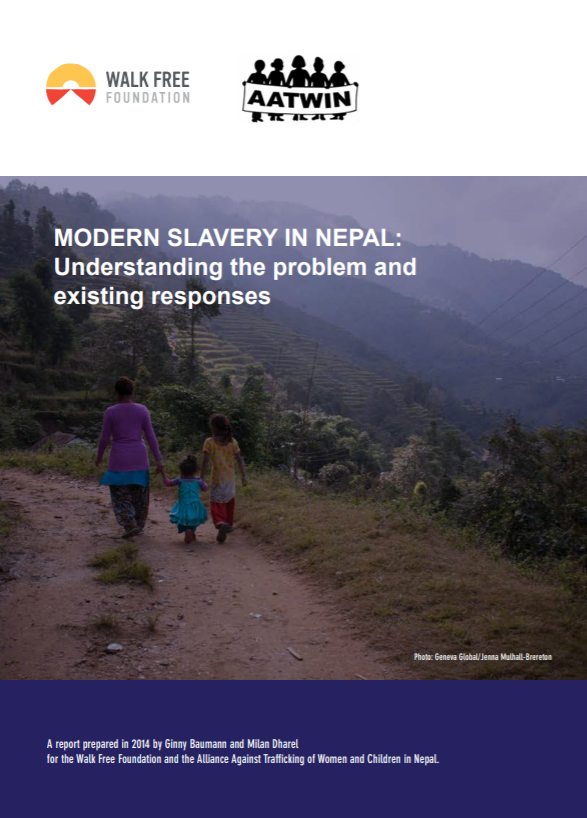Survey data suggests that a minimum, some 229,000 Nepali’s were subject to some form of modern slavery in 2014. While some of this involved victims and offenders within Nepal itself, a significant proportion is likely to have been exploited outside of Nepal itself. Given the limits of surveys in uncovering hidden populations, and that other estimates of related concepts such as forced and bonded labour place the numbers much higher, it is very likely that this survey estimate under-represents the true scale of modern slavery as it affects Nepalis.
Thsi report is based on data obtained through: reviewing published research and news reports, in-depht interviews conducted in 2014 with 55 civil society organisations and government offices in Nepal, and analysis of random sample, nationally representative survey dta from 2014 GLobal Slavery Index Nepal survey results.

